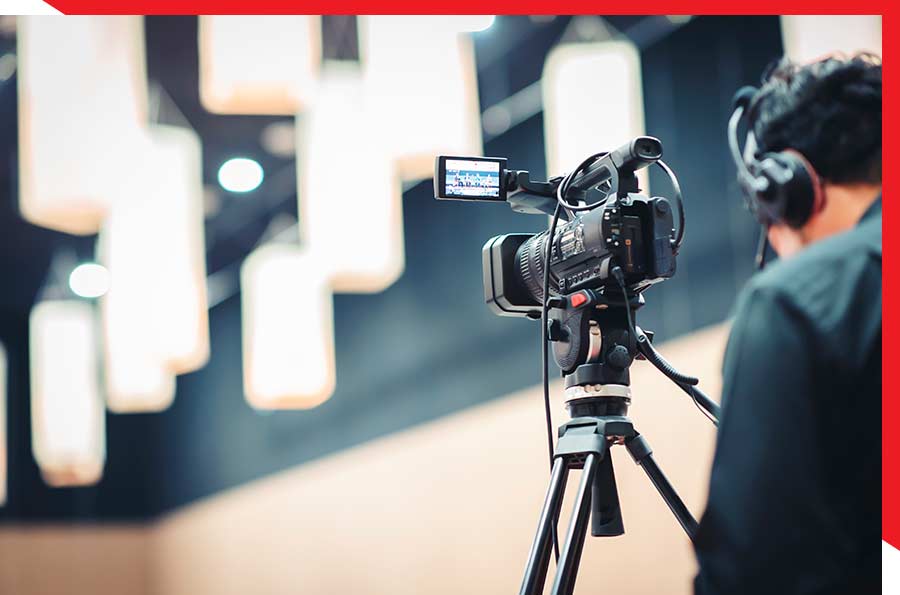The Intricacies of Legal Videography and Its Duty in Capturing Crucial Facts for Evidential Purposes in the Legal Field
In the world of the legal area, the application of videography has actually become a crucial tool for recording the ins and outs and subtleties that can make or damage a situation. From recording criminal offense scenes to recording witness statements, lawful videography plays a critical function in presenting critical details with unmatched clarity and precision. Beyond the surface level of merely tape-recording occasions, there exists a maze of intricacies and considerations that should be navigated to guarantee the admissibility and credibility of video evidence. Comprehending the technological facets, legal demands, and critical implications of legal videography is vital for attorneys looking for to use its complete potential in reinforcing their situations.
Development of Legal Videography
How has lawful videography developed within the legal field over the years? Legal videography was primarily utilized for simple recordings of legal process and depositions.

Furthermore, the surge of online proceedings and remote depositions over the last few years has further drove the advancement of lawful videography, demanding videographers to adapt their abilities to capture process efficiently in an electronic atmosphere (Legal Videography). Generally, the development of lawful videography has been marked by a change towards extra advanced modern technology, improved professionalism, and a wider range of services to satisfy the advancing needs of the legal area
Importance of High-Quality Video Footage
Top quality video in legal videography is vital for properly documenting and presenting aesthetic proof in a trustworthy and specialist fashion. The clarity and detail caught in high-grade footage can be vital in lawful process, permitting an accurate assessment of occasions, expressions, and information that may be essential to a case. Judges, juries, and attorneys rely upon aesthetic proof to understand complex situations, and poor-quality footage can result in misconceptions or questions regarding the authenticity of the evidence offered.
Furthermore, top quality footage can improve the overall discussion of evidence, making it more persuasive and engaging. This can ultimately reinforce the integrity of the legal group presenting the evidence and raise the probability of a favorable end result for their clients.
Strategies for Effective Documentation
To make certain exact and comprehensive documents in legal videography, using effective methods is paramount in recording essential information and proof. One vital strategy is to thoroughly prepare the shots prior to filming. This entails understanding the situation details, identifying essential people, and determining the most vital facets to videotape. Furthermore, utilizing numerous camera angles can supply a comprehensive view of the scene, helping in offering a clear and detailed account of events. It is vital to keep a steady hand while filming to prevent unstable video footage that may jeopardize the high quality and professionalism of the video. Additionally, guaranteeing appropriate lighting is necessary for capturing clear visuals and preventing shadows that could obscure important details. Last but not least, keeping a thorough log of all video, consisting of timestamps and descriptions of the content, is essential for easy recommendation and retrieval during legal process. By executing these methods, legal videographers can enhance the top quality and dependability of their documentation, inevitably enhancing the indicatory value of their recordings.
Admissibility and Verification of Video Evidence
In the world of legal videography where meticulous paperwork is critical, the admissibility and authentication of video clip proof play a critical function in establishing the reputation and validity of taped products. Admissibility describes the acceptance of video evidence in a check it out law court, while authentication makes sure that the video clip presented is unchanged and real. For video clip evidence to be acceptable, it has to satisfy legal requirements such as significance, credibility, and reliability. The chain Visit This Link of wardship, which documents the handling of the video from videotaping to presentation in court, is vital for establishing authenticity.
Techniques such as electronic trademarks, metadata evaluation, timestamps, and expert testimony can be made use of to authenticate video clip proof. Inevitably, the admissibility and authentication of video clip proof are important in maintaining the stability of legal process and guaranteeing that justice is served based on trustworthy info.
Enhancing Legal Strategies With Video Clip Innovation

Additionally, video clip modern technology enables the creation of aesthetically engaging reconstructions of criminal activity scenes, accidents, or various other occasions important to a situation. These repairs can help clear up complex information, timelines, and spatial partnerships, assisting in the understanding of complex legal visit our website issues. Furthermore, video depositions can maintain testaments with high fidelity, ensuring that crucial declarations are properly captured and can be repeated as required. Generally, the combination of video modern technology right into lawful techniques not just enhances the discussion of evidence yet also reinforces the persuasiveness and reliability of legal disagreements.
Final Thought
In final thought, lawful videography plays a crucial duty in recording vital information for telltale purposes in the lawful area. Through the development of innovation and strategies for reliable documents, high-quality video footage can boost lawful techniques and provide important proof in court. Legal Videography. Making sure the admissibility and verification of video clip proof is vital to making use of video clip technology efficiently in lawful proceedings
Comprehending the technological elements, legal needs, and calculated ramifications of lawful videography is important for lawful experts looking for to use its complete capacity in reinforcing their cases.
Legal videography was mainly used for easy recordings of legal procedures and depositions.Utilizing video clip modern technology in lawful methods can significantly boost the effectiveness of lawful specialists in providing proof and disagreements in a persuasive and engaging fashion. Generally, the assimilation of video modern technology into legal methods not just improves the presentation of evidence yet also strengthens the persuasiveness and reputation of legal arguments.
In conclusion, lawful videography plays a critical function in catching crucial details for indicatory objectives in the lawful field.
Comments on “Top Advantages of Professional Legal Videography for Court Cases”